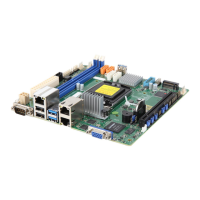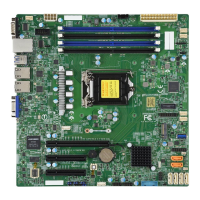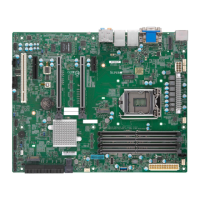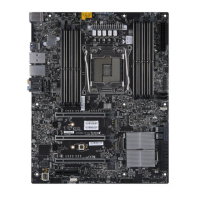15
Chapter 1: Introduction
Motherboard Features
Peripheral Devices
• Two (2) USB 2.0 ports on the back I/O panel (USB0/1)
• Two (2) USB 3.1 Gen 1 ports on the back I/O panel (USB4/5)
• One (1) front accessible USB 2.0 header with two (2) USB connections (USB2/3)
• One (1) front accessible USB 3.1 Gen 1 header with two (2) USB connections (USB6/7)
• One (1) USB 3.1 Gen 1 Type-A header (USB8)
BIOS
• 256Mb AMI BIOS
®
SPI Flash BIOS
• ACPI 6.0 or later, Plug and Play (PnP), PCI F/W 3.0, SPI dual/quad speed support, SMBIOS 2.7 or later
Power Management
• ACPI power management
• Power button override mechanism
• Wake-on-LAN
• Power-on mode for AC power recovery
• Power supply monitoring
System Health Monitoring
• Onboard voltage monitoring for 12V, 5VCC, 3.3VCC, VCPU, VDIMM, 5VSB, 3.3VSB, 1.8V_PCH, 1.2V_BMC, 1.05V_PCH,
and VBAT
• 3+0 CPU switch phase voltage regulator
• CPU thermal trip support
• Platform Environment Control Interface (PECI)
Fan Control
• Fan status monitoring via IPMI connections
• Dual cooling zones
• Multi-fan speed control support through onboard BMC
• Four (4) 4-pin fan headers
System Management
• Trusted Platform Module (TPM) support
• SuperDoctor® 5
• Watchdog, Non-maskable Interrupt (NMI), RoHs
• Chassis intrusion header and detection
• Server Platform Service
LED Indicators
• CPU/system overheat LED
• Power LED
• Fan failed LED
• UID/remote UID
• HDD activity LED
• LAN activity LED
Notes: The table above is continued on the next page.

